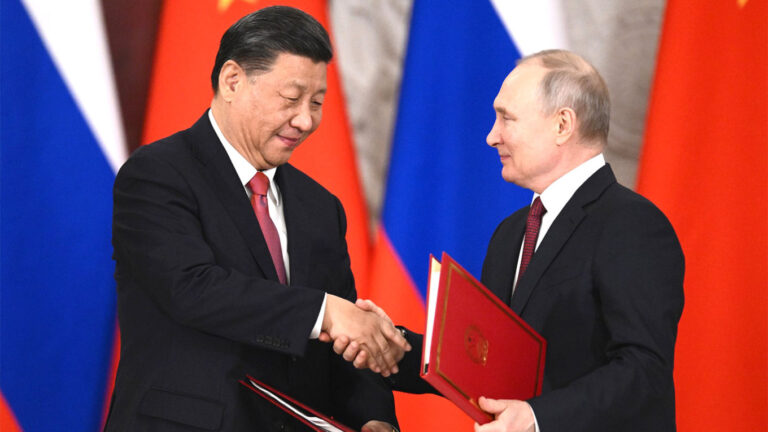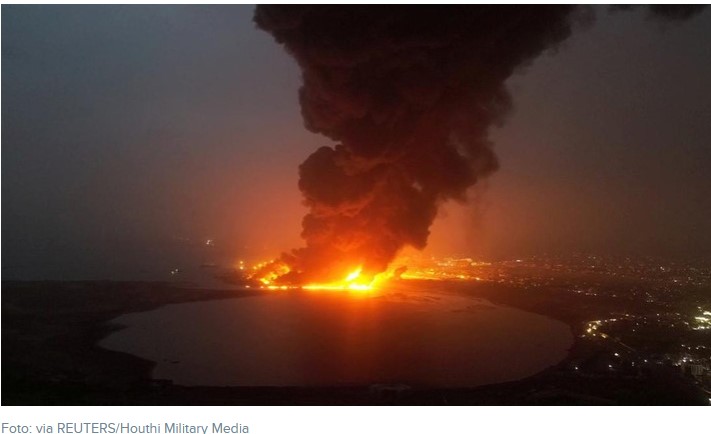
STRATEGIC ASSESSMENT- Israeli tanks drove deeper into eastern Rafah on Tuesday, reaching some residential districts of the southern Gaza city where more than a million people had been sheltering after being displaced in seven months of the occupation state’s military offensive against the Palestinians in the occupied and besieged territory.
Israel’s international allies and aid groups have urged repeatedly against a ground incursion into refugee-packed Rafah, warning of a potential humanitarian catastrophe.
Qatar’s Prime Minister, Sheikh Mohammed Bin Abdulrahman Al-Thani, said that Israel’s operations in Rafah have set back efforts at trying to agree on a ceasefire in talks that are being mediated by his government and Egypt, although negotiations will continue.
Israel has vowed to press on into Rafah even without the support of allies. It says that its operation is necessary to root out four remaining Hamas battalions in the city.
“The tanks advanced this morning west of Salahuddin Road into the Brzail and Jneina neighbourhoods,” one resident told Reuters via a chat app. “They are in the streets inside the built-up area and there are clashes.”
Video on social media showed one Israeli tank on George Street in Al-Jneina neighbourhood. Reuters could not verify the video.
According to the armed wing of Hamas, it destroyed an Israeli troop carrier with an Al-Yassin 105 missile in the eastern Al-Salam neighbourhood, killing some crew members and wounding others. The Israel Defence Forces declined to comment on the report.
In a round-up of its activities, the occupation army said that its forces had eliminated “several armed terrorist” cells in close-quarter fighting on the Gazan side of the Rafah Border Crossing with Egypt. In the east of the city, it said that it had also destroyed “militant” cells and a launch post from where missiles were being fired at Israeli troops.
Israel issued evacuation orders for Palestinians to move from parts of eastern Rafah a week ago, with a second round of orders extending to additional zones on Saturday. They are moving to empty tracts of land, including Al-Mawasi, a sandy strip bordering the coast that Israel has designated as a humanitarian area. Aid agencies have warned that the area lacks sanitary and other facilities to host such an influx of displaced people.
UNRWA, the main UN aid agency in Gaza, estimates that some 450,000 people have fled Rafah since 6 May.
People face constant exhaustion, hunger and fear. Nowhere is safe
the agency posted on X.
The war has pushed much of Gaza’s population to the brink of famine, says the UN, and has devastated its medical facilities, where hospitals, if working at all, are running short of fuel to power generators and other essential supplies. James Smith, a British emergency room doctor volunteering in hospitals in southern Gaza, said that he had been told by a World Health Organisation official that some emergency fuel had made it into the Strip.
“Health is still being prioritised over other essential services, so when health looks a bit better it generally means other essential services are struggling,” Smith told Reuters via a WhatsApp voice note. “It’s a zero-sum game.” However, major hospitals, including Al-Aqsa, should have enough fuel for six days if it was managed frugally, he added.
Fighting across Gaza has intensified in recent days, including in the north, with the Israeli military heading back into areas where it had claimed to have dismantled Hamas months ago. Israel says the operations are to prevent the movement, which has controlled Gaza since it won the last Palestinian legislative election in 2006, from rebuilding its military capacities.
The Palestinian death toll in the war has now surpassed 35,000, mainly children and women, according to Gaza health officials.
At least 70,000 more have been wounded, and an estimate 8,000 are missing, presumed dead, under the rubble of their homes. Around 82 Palestinians have been killed in the past 24 hours, the highest death toll in a single day in many weeks.
Gun battles between Israeli forces and Palestinian fighters have been the fiercest in months, according to residents, both in the north and south of the densely-populated enclave of 2.3 million people. In the Zeitoun neighbourhood of Gaza City in the north, Israeli armoured bulldozers demolished clusters of houses to make a new road for tanks to roll through into the eastern suburb.
In northern Gaza’s Jabaliya, a sprawling refugee camp built for displaced Palestinians 75 years ago, residents said Israeli forces were trying to reach as deep as the camp’s local market under cover of heavy shelling.
The occupation forces claimed to have killed dozens of Hamas fighters in Jabaliya and dismantled a network of explosives. In Zeitoun, they said that they had located tunnel shafts and destroyed several rocket launchers.
With fighting intensifying, Qatar’s Sheikh Mohammed said ceasefire talks were at a stalemate. “There is one party that wants to end the war and then talk about the hostages and there is another party who wants the hostages and wants to continue the war,” he pointed out. “As long as there is no commonality between those two things it won’t get us to a result.”





